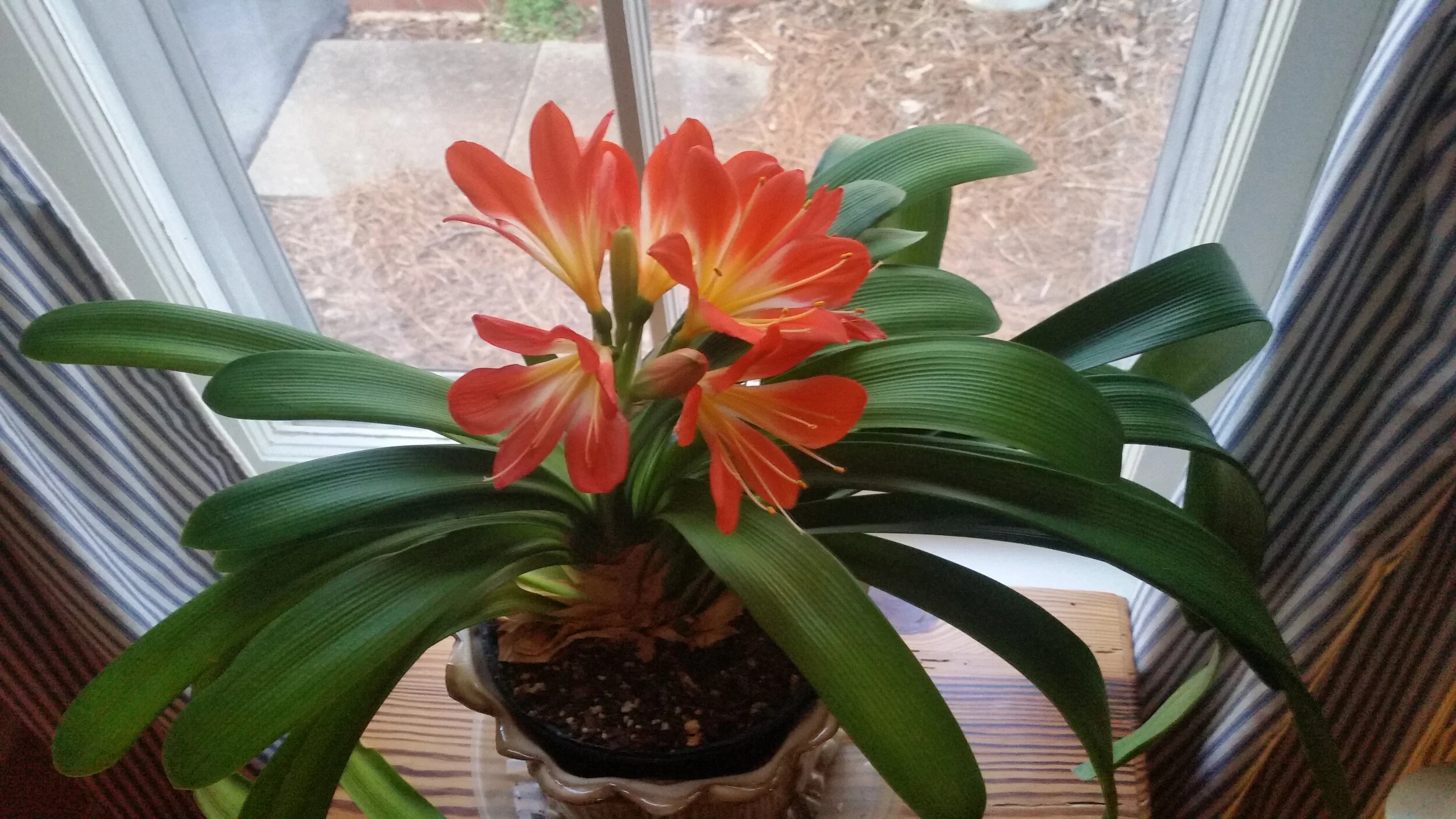The trumpet-shaped blooms of Clivia offer a welcome bright spot during gray mid-winter. Clivia miniata (pronounced KLIV-ee-ah min-ee-AY-tah) is cold hardy only in zones 9 and warmer, which means most gardeners enjoy it as a houseplant.
Clivia flowers may be orange or yellow (less common, more expensive). My first plant came as a gift from fellow Master Gardener, Dr. Jim Weeks. He assured me that it would survive low light levels, being root bound, occasional drought, and general neglect. Check, check and check. I placed it in a north-facing window, and have been rewarded with orange flowers every year since. Plants produce single stems topped with clusters of up to twenty buds. These open over days or weeks. My record has been blooms over 23 days. Not bad for a victim of my houseplant skills! The flowers result in seeds, but the most reliable means of propagation is separation and re-potting of the offsets produced by a mature plant. It may take a year or two for these offsets to bloom. Plants bloom best when moderately root bound.
Treat plants to a lukewarm shower occasionally to remove dust from the broad strap-like leaves that resemble Amaryllis, to which it is akin. Otherwise, avoid overwatering. Allow plants to dry out slightly between waterings, and never allow them to stand in water. Oldest leaves may yellow. This is normal. Trim these off with scissors. Give plants a rest period of 4-6 weeks with reduced water and night temperatures of 50 degrees to induce bud set. Use a water-soluble houseplant fertilizer at half-strength every two weeks once buds are visible. Plants prefer bright, filtered light but no direct sun. A north-facing window is ideal.
All parts of Clivia are toxic to pets and people.
A flowering Clivia miniata. Note that this specimen is in a nursery pot within a decorative cache pot. I remove the black plastic pot before giving the plant a thorough soaking, and allow it to drain before returning it to the ceramic container.
This specimen is happy in a north-facing window, where it receives bright light but no direct sun.
There is root bound, and then there is Criminal Plant Neglect. This falls into the latter category.. She got a root trim and fresh soil.



